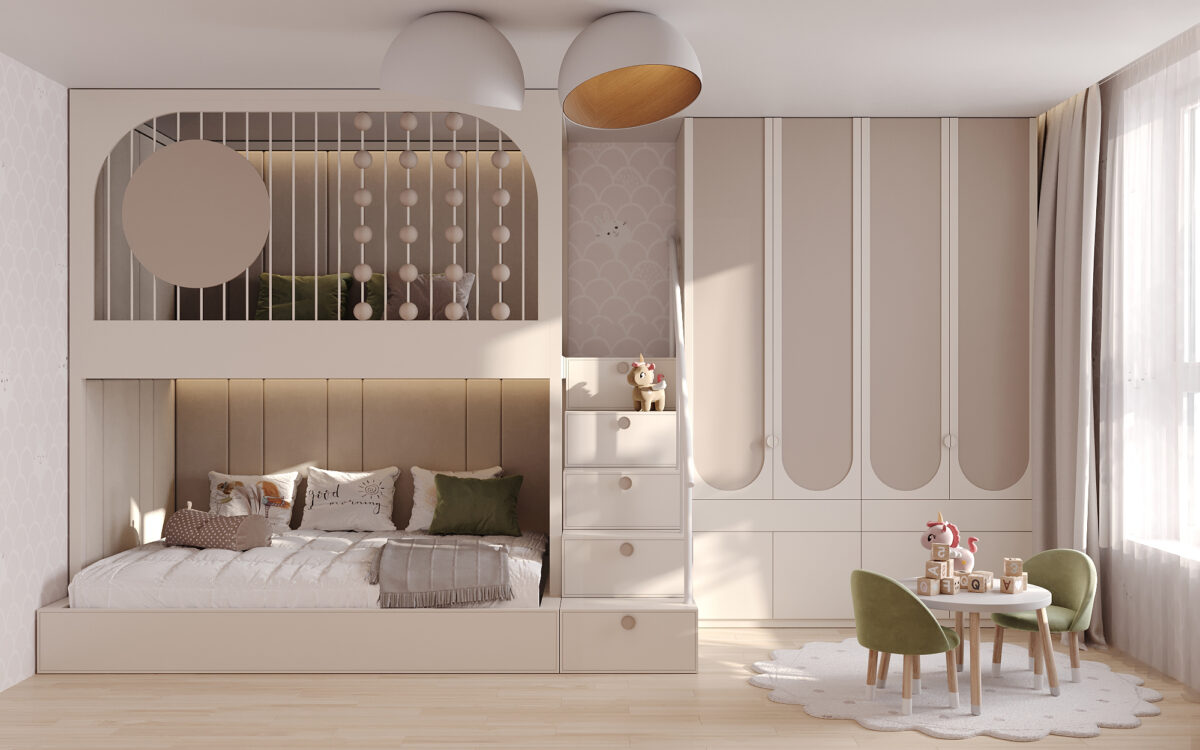Children’s perception of color is very different from that of adults. Children’s color palette is narrower than that of adults, and it expands as they grow up. Newborns see the world in black and white.
The first color children begin to distinguish is red.
Then they begin to perceive other bright colors, such as yellow. Babies are drawn to bright colors, and they begin to recognize and distinguish colors even before they know their names.
Color matters.
The colors that surround the child affect his or her psyche, mood, behavior and well-being. Therefore, when creating children’s rooms, it is important to maintain a balance so as not to overdo it with bright colors.
Yellow increases concentration. It evokes joy and positive emotions. When decorating a room, bright yellow should be used in a limited way, because it lights up the child and stimulates his or her activity.
Red color causes excessive activity. It has a positive effect on calm, apathetic children, but it can stimulate hyperactive kids to be even more active. You need to be careful with red, do not add a lot of red to the child’s bedroom, as well as to the work area, as it can be distracting and interfere with concentration.
Green color is suitable for the workplace. It has a calming effect on the psyche, does not tire, and helps to absorb information. Green will help fight mood swings in teenagers.

The blue color attracts attention. It has a favorable effect on boys. Blue and blue colors have a calming effect on active children. In addition, blue has a favorable effect on the child’s eyes. Shades of blue and blue restrain aggression and excessive emotionality.
How to properly decorate a child’s room?
Designers advise choosing no more than three colors for decorating a child’s room. Shades of red, blue, and yellow are best perceived by children. It is best to make the ceiling white or beige. White color increases the illumination of the room because it reflects up to 80% of daylight. If it is a bedroom, then it is better to give preference to soothing colors – blue, green and pink. To decorate the work area, it is better to use white and green-blue colors.
Some designers rely on the child’s temperament when choosing a color palette for a child’s room. But the child’s temperament and character can change over time, so it is better to choose some neutral and universal colors or shades to avoid repainting the room during adolescence or a crisis of 3-6 years.
To make a choice, it is better to turn to specialists who will help you create the perfect children’s room based on their own experience and knowledge.

